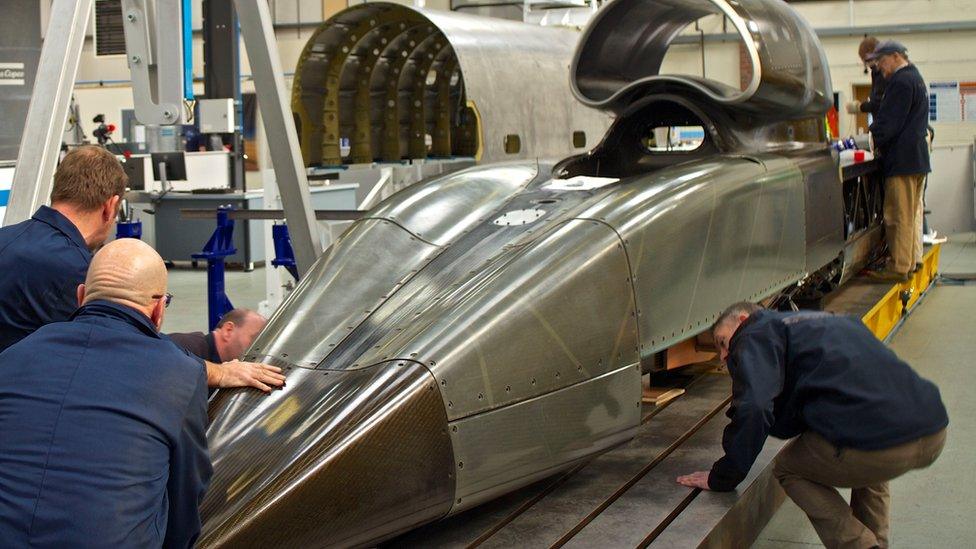Bloodhound: Seat installed in supersonic car
- Published
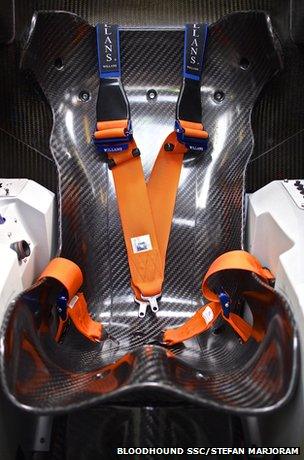
The Wing Commander's "office chair"
Andy Green, the world's fastest car driver, likes to think of his cockpit as an "office".
That being the case, he now has some new furniture.
The RAF Wing Commander has just seen the installation of the seat he will use in the Bloodhound Super Sonic Car, external.
This is the vehicle he will drive in South Africa later this year to try to break his own world land speed record (763mph) set back in 1997. The aim eventually is to go beyond 1,000mph.
Like all race cars, the seat has been moulded to Andy's body shape, for comfort and safety.
It was a complex build - as with a lot of the components in Bloodhound - and involved a consortium of UK engineering expertise.
First, Andy had to sit in his driving position, in a bead bag provided by Real Equip. This took a cast of his body.
Next, Hexgon Metrology scanned him and the cast to create a 3D model; in essence, a template around which to fabricate the seat.
This started with Sigmatex and SHD, who produced the carbon fibre threads and weave. The URT Group then did the final "lay up" of the material.

Seat production starts with getting a cast of Andy Green's body shape
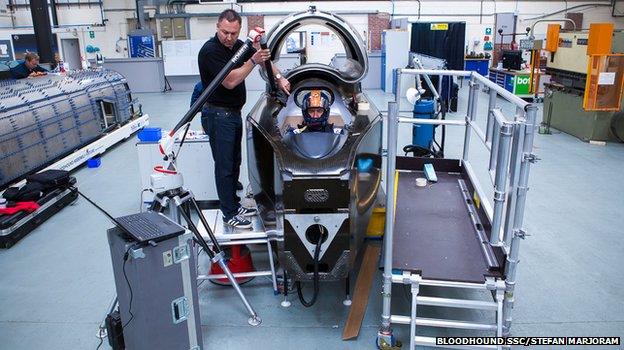
A perfect fit is required for safety - but also to maximise comfort under loading
It took one "sitting day" to get the shape correct, and 10 man-days to make the finished article. The seat is 8.4mm thick and has, in places, 26 layers of carbon fibre.
It has no padding; it doesn't need it because the shape is perfect. Andy should feel quite snug as his supersonic car pins him back under acceleration with a force of 2g (twice the acceleration due to gravity), and throws him forward into his straps under deceleration with a force of 3g.
"All of that is really neither here nor there. What this seat is really about is what happens if there is an accident," the RAF man told BBC News.
"It is a structural carbon member of the cockpit; it is bolted to the monocoque. I will be sitting in the strongest, most survivable crash structure in the history of motorsport, and the seat is an integral part of that."
The Bloodhound project has been receiving advice and direction from motorsport's governing body, in the form of Peter Wright and Andy Miller from the FIA Institute, external.
For example, they have overseen the fitting of the seat into the cockpit to ensure the harness straps, buckles, and the Hans device (which holds Andy's head in place) sit properly in relation to the seat and Andy himself. This means all the loads will be carried across his body properly.
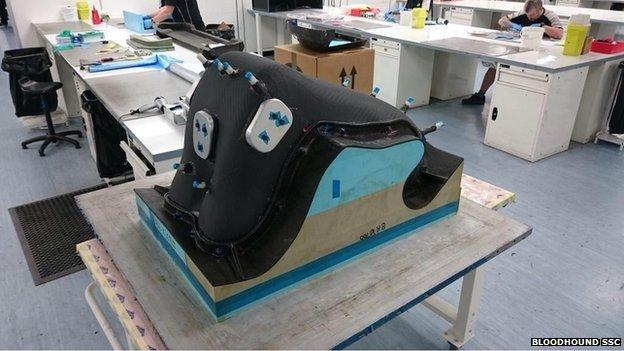
A consortium of companies came together to make this special seat
When the Wing Commander set the current land speed in the Thrust SSC vehicle in 1997, he used a large foam-moulded seat.
"At the time, that's what we were advised," he recalled. "Today, you'd never use that; the technology is so much more advanced.
"And it's another of those areas which genuinely makes me say: I feel a lot more comfortable about going 1,000mph with this technology in Bloodhound than going 760mph in the old car with its technology."
The Bloodhound SSC project aims to have the car ready for low-speed runway testing in the UK in August.
All the major components have been designed and the drawings sent out to top aerospace companies for manufacture.
As soon as these parts arrive at Bloodhound's technical centre in Bristol, they are bolted in place.
The car will use a Eurofighter jet engine and a hybrid rocket motor to power it through the sound barrier.
The "race track" will be a specially prepared dried-out lakebed in Northern Cape.
Driver Andy Green reveals the cockpit of the Bloodhound supersonic car
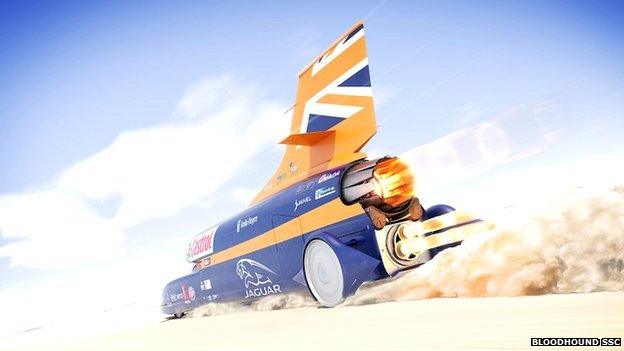
The aim this year is to break the existing record, and then go beyond 1,000mph in 2016
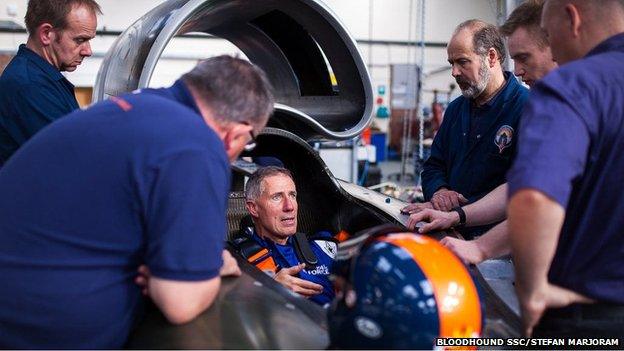
Correct installation ensures the seat will work with Andy's helmet and his Head and Neck Support (Hans) device
Jonathan.Amos-INTERNET@bbc.co.uk and follow me on Twitter: @BBCAmos, external
- Published2 April 2015
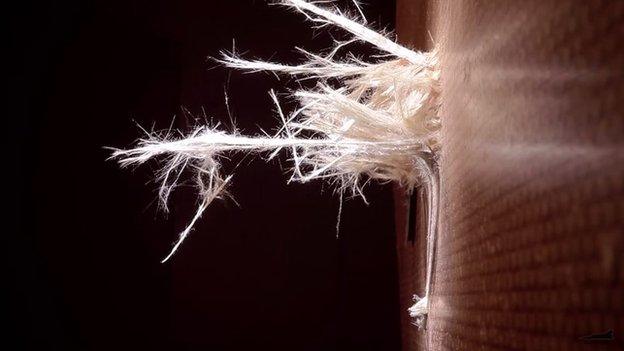
- Published25 March 2015
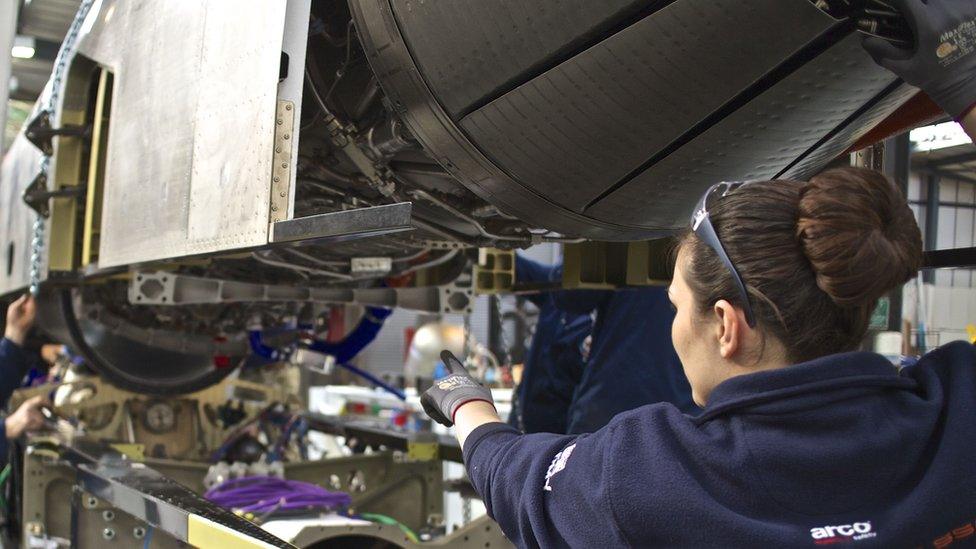
- Published14 March 2015
- Published2 March 2015
